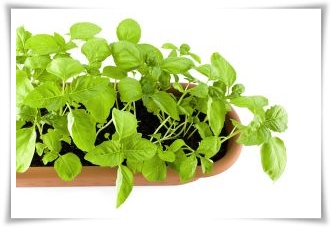How to Grow Herbs: Growing Medicinal and Kitchen Herbs the Easy Way
Some people seem to know instinctively how to grow herbs, while others need to learn. The methods vary based on whether you plan to plant them indoors or outdoors. Some people sow seedlings that they buy from a plant nursery or gardening stores, while others start from scratch using seeds. The more adventurous types use clippings they take from herbs they bought to use in their cooking.
Growing Herbs from Seeds and Seedlings

Photo courtesy of Michael Filip Gmerek
Before looking for guidance on how to grow herbs, determine what you want to plant. Some people plant only herbs that they plan to use themselves. Others plant a variety so that they can give some away to friends and family. Whether you start out with familiar herbs like basil and parsley, adding to your collection is easy once you get comfortable with gardening. Ideal herbs for beginners include thyme, mint, fennel, and dill.
If you want to plant herbs without spending too much, you do not need to buy seed trays from a store. Many containers available at home are useful for sowing your seeds in. When starting with seeds you need to get the following first:
- Container for sowing the seeds; this can be a commercial seed tray or any suitable container. The size will depend how many seeds you plan on sowing.
- A bag of soil-less growing material (soil can be used, but results will vary)
- A sieve
- Spray bottle for water
- A piece of transparent plastic
- Fill the container to the three quarter mark with soil-less medium or soil to plant seedlings in or prepare a spot in the garden for transplanting seedlings
Directions for How to Grow Herbs
- Fill the container that you will be placing the seeds in with soil-less soil or "real" soil
- Moisten the soil with water and place seeds in
- Use the sieve to sift soil-less soil or "real" soil and use the fine dust to cover seeds. You can also put seeds in holes made in the soil and then cover the holes
- Cover the container with plastic to encourage germination
- If you sow more than one type of herb in different containers or seed trays, use labels to help you easily identify what is in each container or cell
- Keep soil medium moist and check periodically to see when seeds burst through
- Once germination starts, take the plastic off the container and place it where it can get enough light
- Once plants are at least 2 inches tall, remove them carefully and repot in containers set aside for this purpose. Keep the soil that is around the seedling when replanting. At this stage you can also plant herbs in your garden outside if that is where you prefer to grow them.
- Place container in a well-ventilated area that has adequate sunlight.
When using soil, or planting outdoors, it is important to pay attention to how fertile the soil is and its capacity for drainage. Look at what plants are growing in the area and consider how well they do. This is usually a good indicator of soil fertility.
Tips for Caring for Herbs
One rule of thumb when it comes to knowing how to grow herbs is never to over-water them. Too much water will cause the plants to rot. In some cases it can cause insects and pests to thrive. It is necessary to check the herb garden or containers for weeds and remove them. Doing this provides more space for herbs to grow and thrive and prevents pest infestation.
Some gardeners will place organic material around the roots of the plants. It is advisable to be on the lookout for slugs or similar pests when you use kitchen waste such as tea and vegetable matter as mulch.
When learning how to grow herbs the climate and time of year play a big role. This information will help ensure that you have fresh herbs year round. Many common herbs will thrive in containers indoors even during the winter months. If your plants are outdoors, you can safely transfer them to pots and keep them inside during the cold months. If you have a few hours of sunlight during winter, place them outside for a while. Even using florescent lighting can help you grow herbs during the colder periods.





New! Comments
Have your say about what you just read! Leave me a comment in the box below.